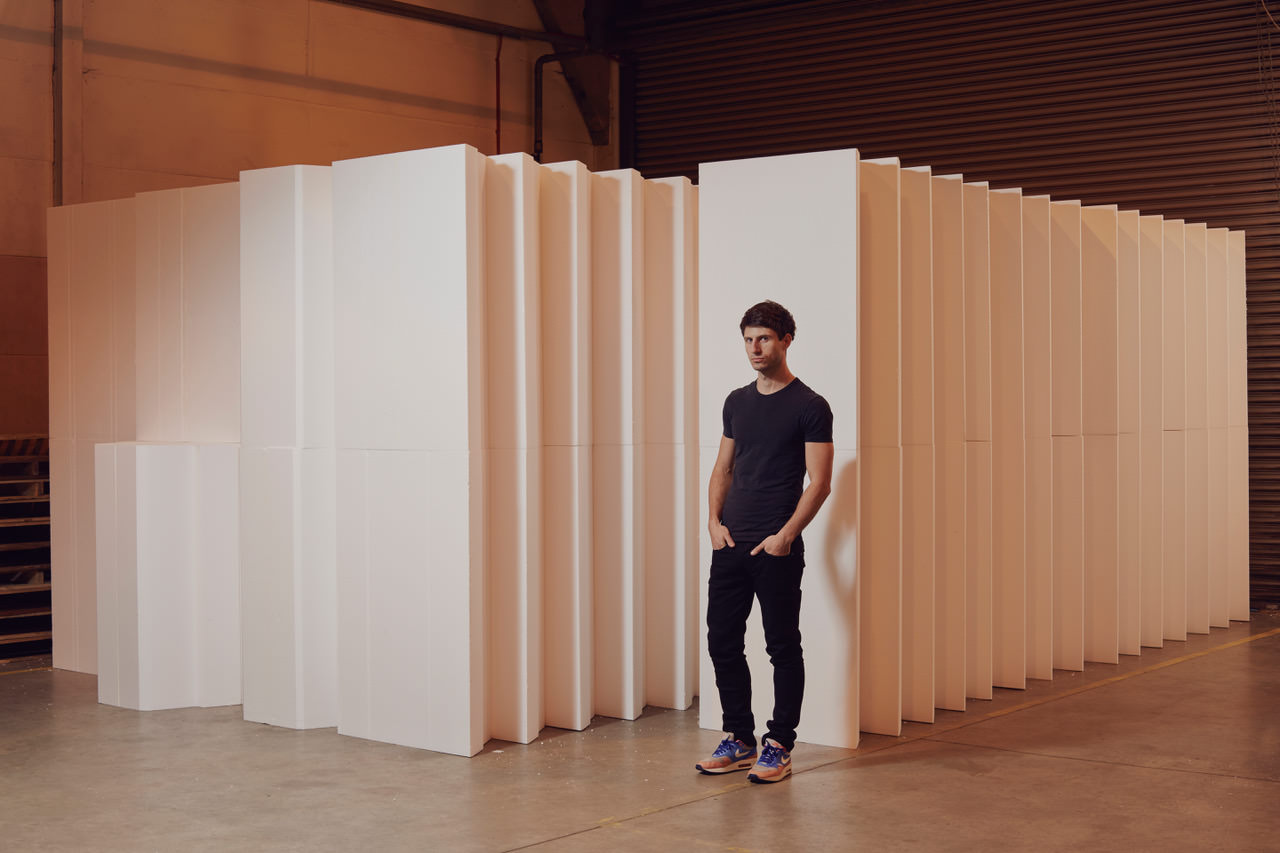Nick Hornby and Nico Muhly met in 1999, in the Garden of Cosmic Speculation at Portrack House in Scotland. The garden was conceived by Maggie Keswick and Charles Jencks (who is also said to have coined the term “postmodern”). Almost twenty years on, Hornby and Muhly have a conversation about performativity and the landscape. Hornby currently has an exhibition of sculpture in the gardens of Glyndebourne Opera House in Lewes, and Muhly’s opera Marnie, based on the famous Hitchcock film of the same name, gets its world premiere at the English National Opera in London this month.
NICO MUHLY: Unlike many world-famous opera houses, Glyndebourne is equally well known for its position in the natural world that surrounds it. There is also a codified sense of ritual around attending a show there.
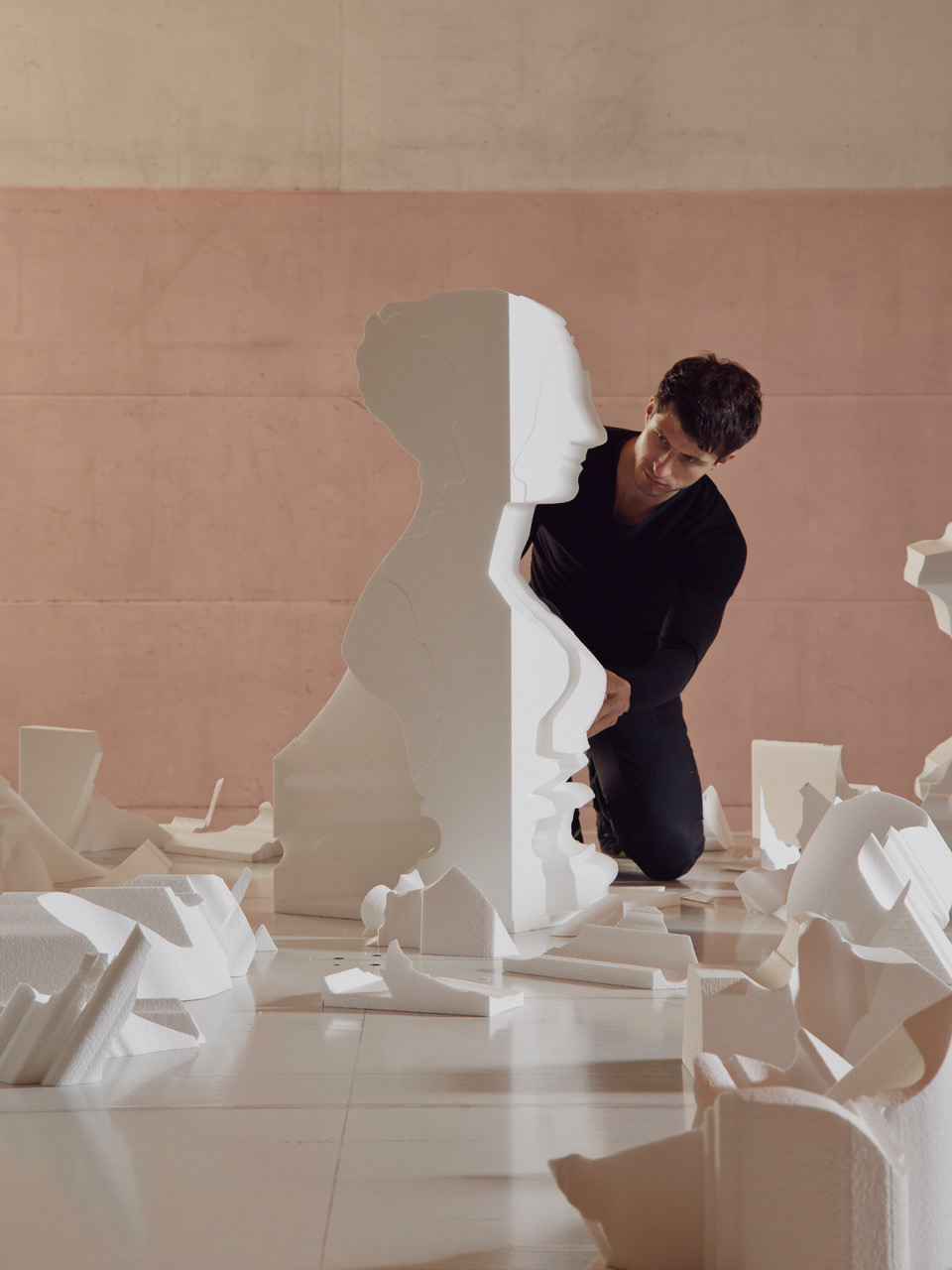
Photo by Nick Ballon.
NICK HORNBY: Nico, I agree. But first I’m distracted by the word “natural.” Glyndebourne isn’t “natural”—picnicking in black-tie isn’t an everyday affair (I normally picnic in jeans and spill mustard down my shirt). Glyndebourne is leisure that’s hard work. But this is no bad thing. I’m a sculptor and I love hard work . . . these objects take months and months of design, and cutting and sanding.
My first time to the opera at Glyndebourne was the opening night of this year’s festival. In the run-up I was pretty resistant to dressing up (I was worried about the mustard), but when it came down to it I was extremely pleased—I became a participant in the ritual and as a result embraced the unrealness of the opera more. Do you like music when it’s aloft on a plinth, separate from reality, or in the landscape? I feel your work has moments of familiarity mixed with things more out-of-this-world.
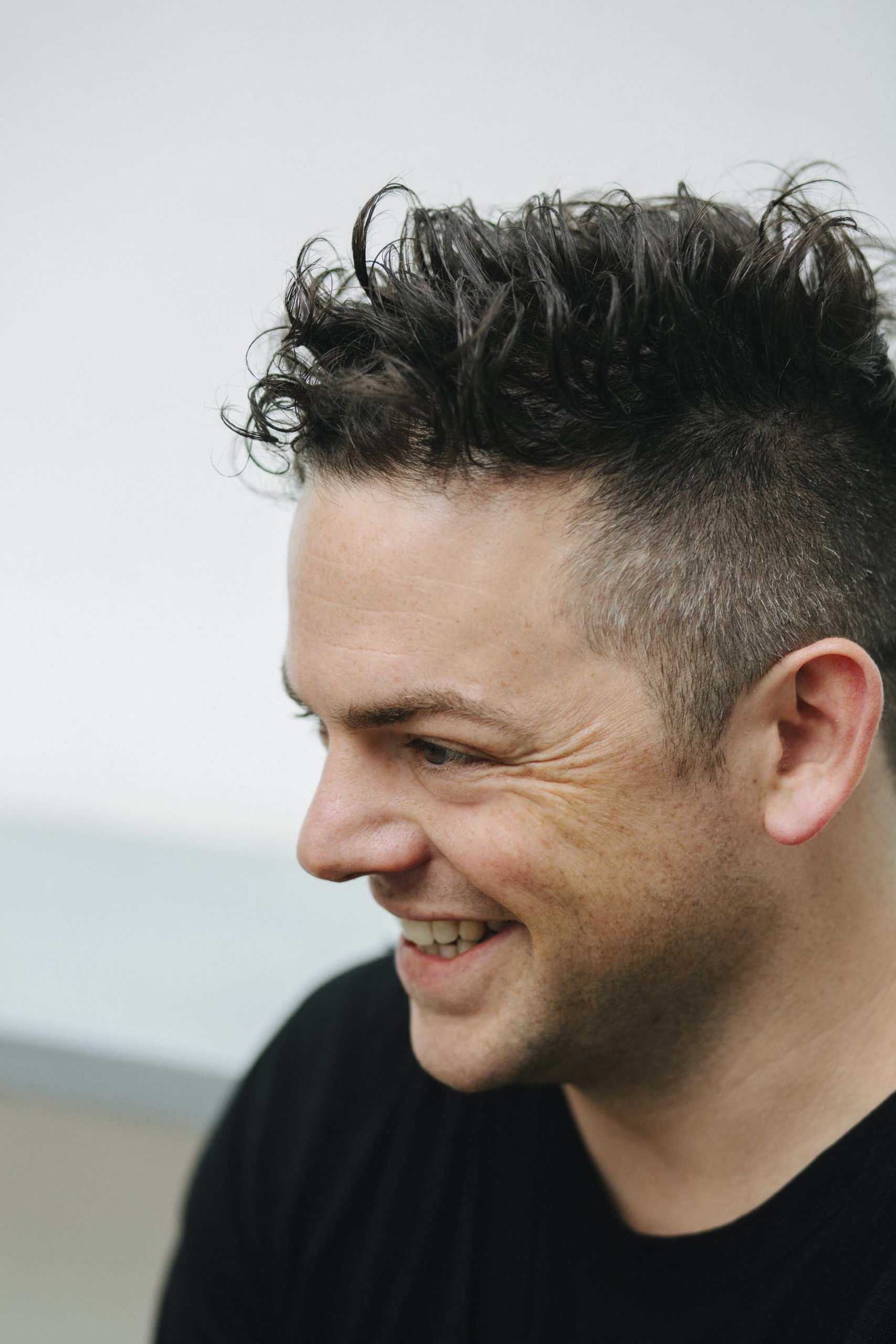
Photo by Ana Cuba.
NM: It’s something I’m constantly aware of inasmuch as I write music that’s designed for concert halls and opera houses and “traditional” things of this nature, but then also have recently been doing these sort of site-specific installation things (such as a piece designed to exist in a darkened room in which the only object is the Wilton Diptych). Then, also, I write a lot of church music, which, of course, has its own rituals (and is, itself, a form of ritual). Your work there is public in one sense but private in another—the demographics of the place are specific, and the way to get there is not as simple as the fourth plinth in Central London.
NH: You’re right. However, I don’t think that public is “good” and private is “bad.” I’ve made work in a New York park funded by private donors, and I’ve made work in the Tate funded by the government (DCMS). I think the lines quickly blur. But you’re right, Glyndebourne’s not a public place. I actually requested that my show could be viewable by appointment, meaning that anyone can call up and arrange permission to see the works. They agreed. This is a first for them. It was important for me.
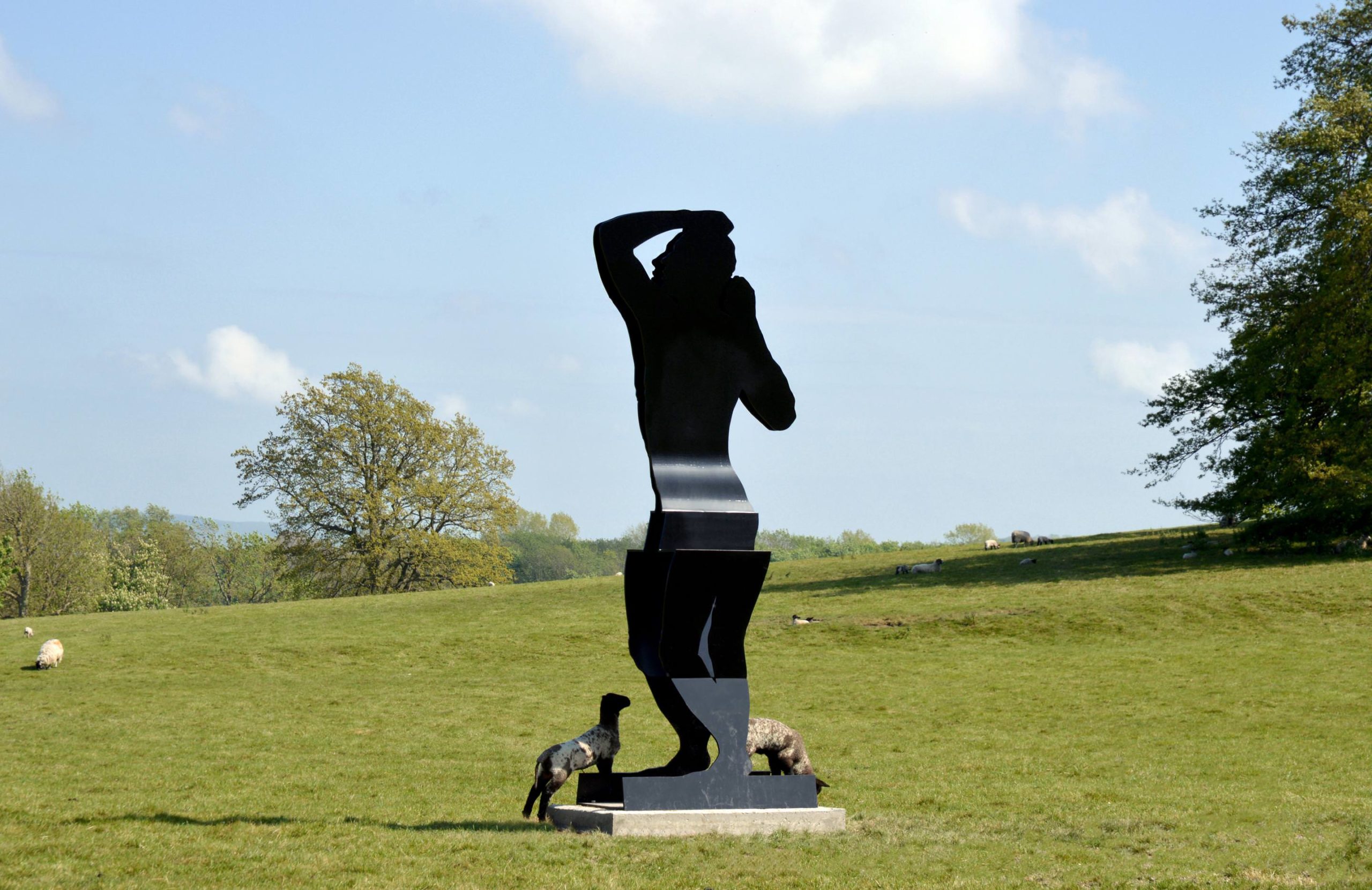
Nick Hornby, “Age of Bronze folded to Bird in Space #1,” 2017, Glyndebourne, U.K. Image courtesy of the artist.
NM: I’m glad to hear that you can ring up; that’s a very good idea. I suppose inasmuch as you and I met in just such a private garden, I’d hoped you’d allow for a small chink in the armor. Do you think about performance and ritual in your work?
NH: Performance, yes; ritual, I’ve not before. The idea of performance is so entrenched in the history of sculpture: marble figures frozen from stories, discus throwers, David and Goliath, Jesus, men on horses. In the sixties, around discussions of Minimalism, “performativity” became a dirty word. My works are arguably extremely theatrical—there is the idea of walking around the sculpture and the “reveal” of seeing different facets. This type of performativity doesn’t interest me so much. I feel the issue has been raised and answered thoroughly by other artists and writers. What does interest me is legibility of narrative in process. The performativity of a CNC carving machine or fingers working clay. In Michelangelo’s “Captives,” you can see the marks made by the claw hammer—and these imply the maker. I imagine this issue of legibility is important to you, too? In music, some things are laid bare—the vibrating string is clear to see—but the workings of computers (“meta-mediums”) hide their function.
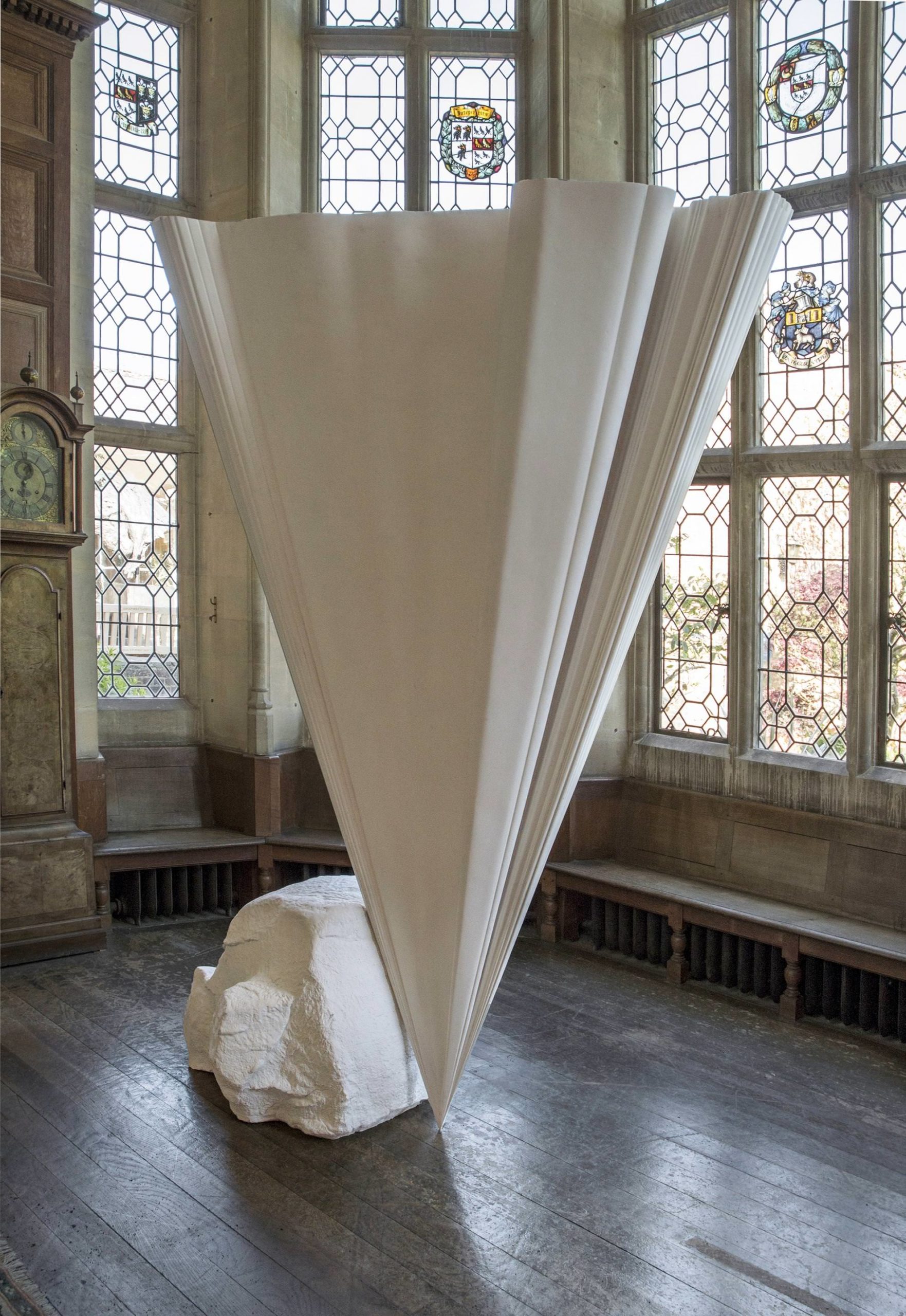
Nick Hornby, “Bird, God, Drone,” 2013, Glyndebourne, U.K. Image courtesy of the artist.
NM: Well, you know, in what they’d call “classical American Minimalism”—and I’m thinking here of things like Reich’s Clapping Music or Glass’s Music in Similar Motion and things of that era—one of the things that happens is that the structure of the music is laid totally bare. Yes, we can follow along with Mozart symphonies and know more or less where we are in the building (sort of like how most churches have the same set of objects). But with this Minimal tradition, the whole thing becomes about seeing precisely where we are.
NH: I always find I get lost in Clapping Music. I can hear “structure,” but I can’t work out how the small units fit into the large units. With Donald Judd, you can see how many units make up the whole. You see both simultaneously. I’ve heard you speak about opera’s ability to have simultaneity, danger and beauty or lyricism and jaggedness. In your opera, Marnie changes her name, she’s a liar, she’s beautiful. For someone notable to hold on to the structure of Reich, maybe narrative helps carry multiple ideas.
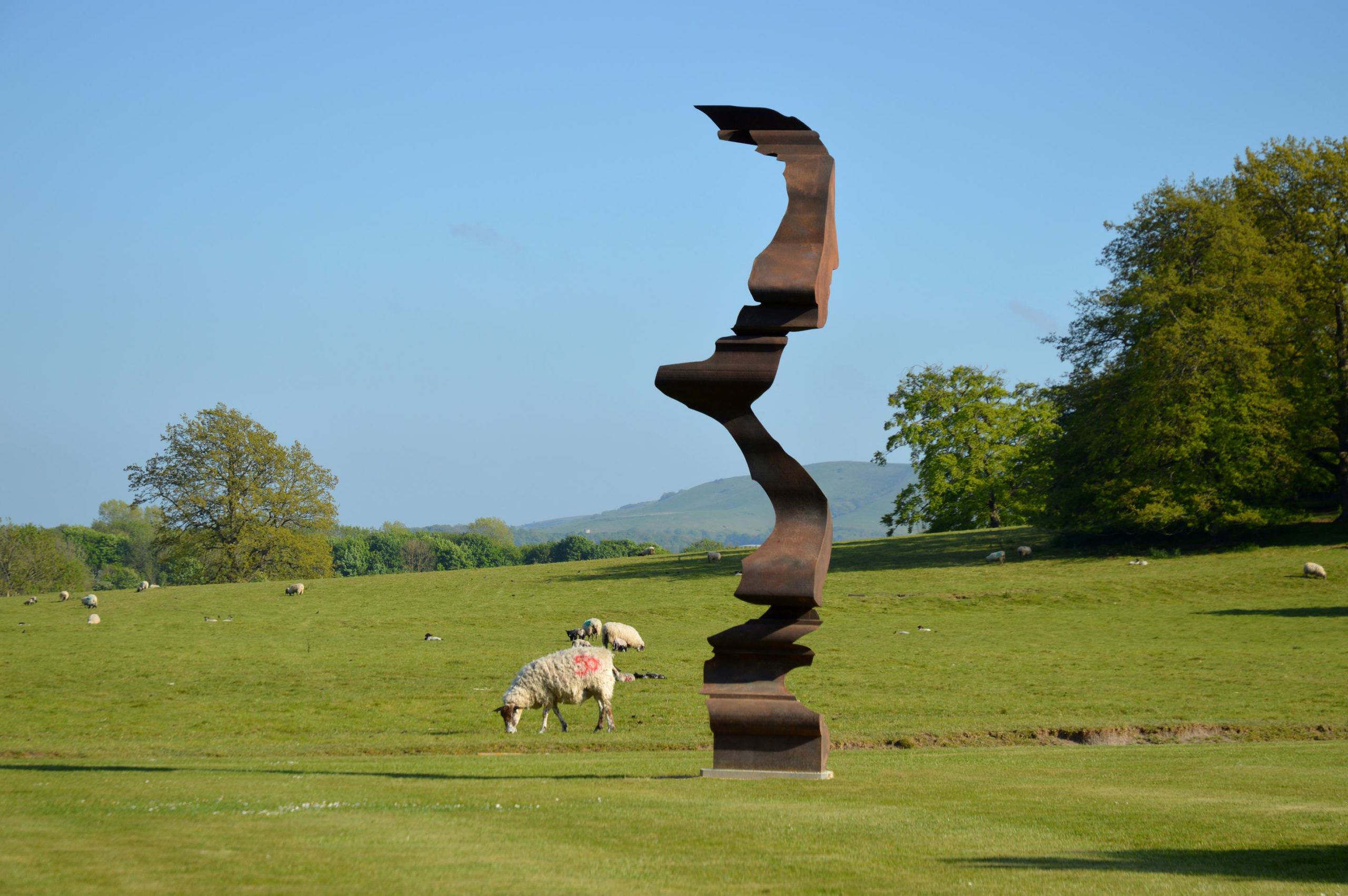
Nick Hornby, “Muse Offcut #1,” 2017, Glyndebourne, U.K. Image courtesy of the artist.
NM: But then of course, the romance of the reveal appeals even to the most austere artists, don’t you think?
NH: The idea of romantic artist I find quite comic. Authenticity is a struggle, no? One has to wear so many hats—bookish nerd, fabricator, administrator, flamboyant fun person . . .
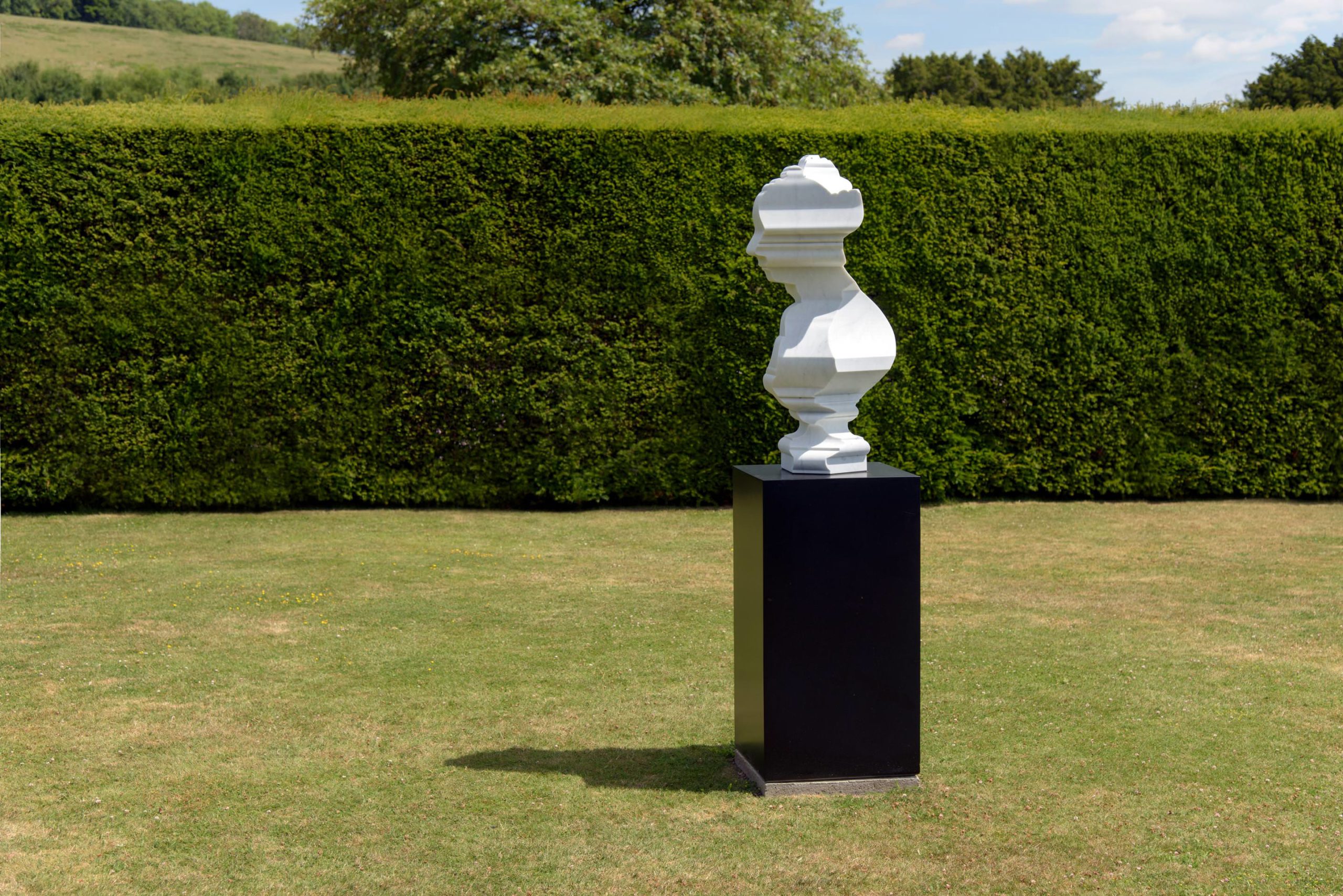
Nick Hornby, “Vanity Working on a Weak Head Produces Every Sort of Mischief (Jane Austen),” 2016, Glyndebourne, U.K. Image courtesy of the artist.
To return to “ritual,” I don’t normally think about things in terms of ritual, but to reflect on it, the art world certainly has modes of behavior which perhaps are very ritualistic: show openings, hobnobbing, auctions. And the repetitions . . .
NM: Yes! That is a form of ritual! But I suppose one of the things one learns sitting around churches is that people, when they view (particularly ecclesiastical) sculpture, have such intense and personal ways forward—I followed a woman around a chapel in Naples (with the Cristo Vellato), who always did the same thing: brush past the object, then look back at it from a distance, come back, read the placard, and then look. I suppose I’m asking if you have a ritual when you look at other work versus how you expect yours to be seen?
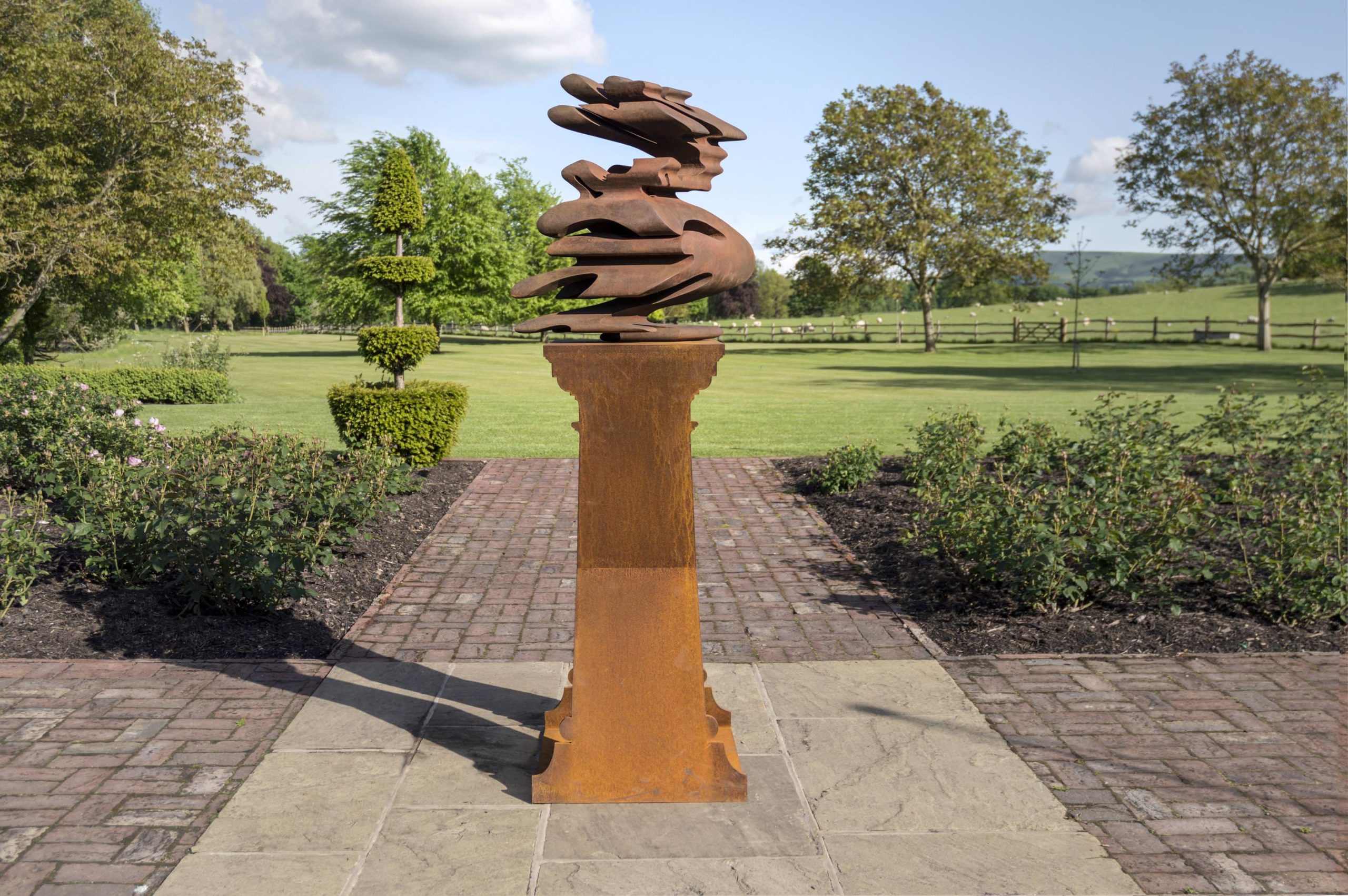
Nick Hornby, “Une seconde vie #1,” 2017, Glyndebourne, U.K. Image courtesy of the artist.
NH: I’ve done a very similar thing, flirting with a marble figure, wanting to touch it, then touching it. As a participant of the contemporary art world, I’m interested in the debate, so I read the placards. Sometimes a show’s purpose is more about the overarching curatorial narrative and the artworks are a means to that end; other times you can zoom into one work and everything else fades.
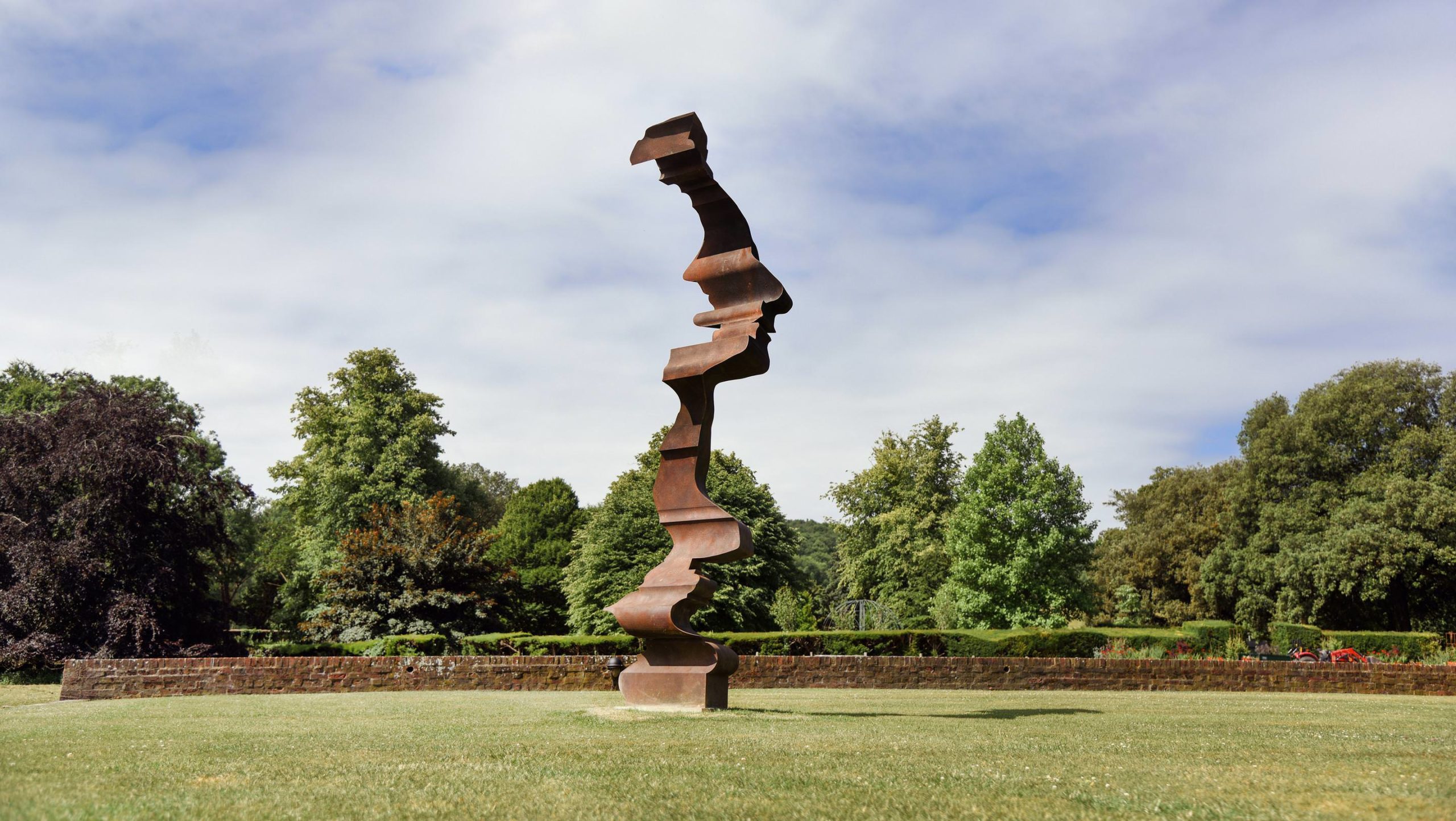
Nick Hornby, “Muse Offcut #1,” 2017, Glyndebourne, U.K. Image courtesy of the artist.
“Nick Hornby Sculpture (1504–2017)” is on view at Glyndebourne until March 2018. Marnie gets its world premiere on November 18 at the English National Opera in London.


